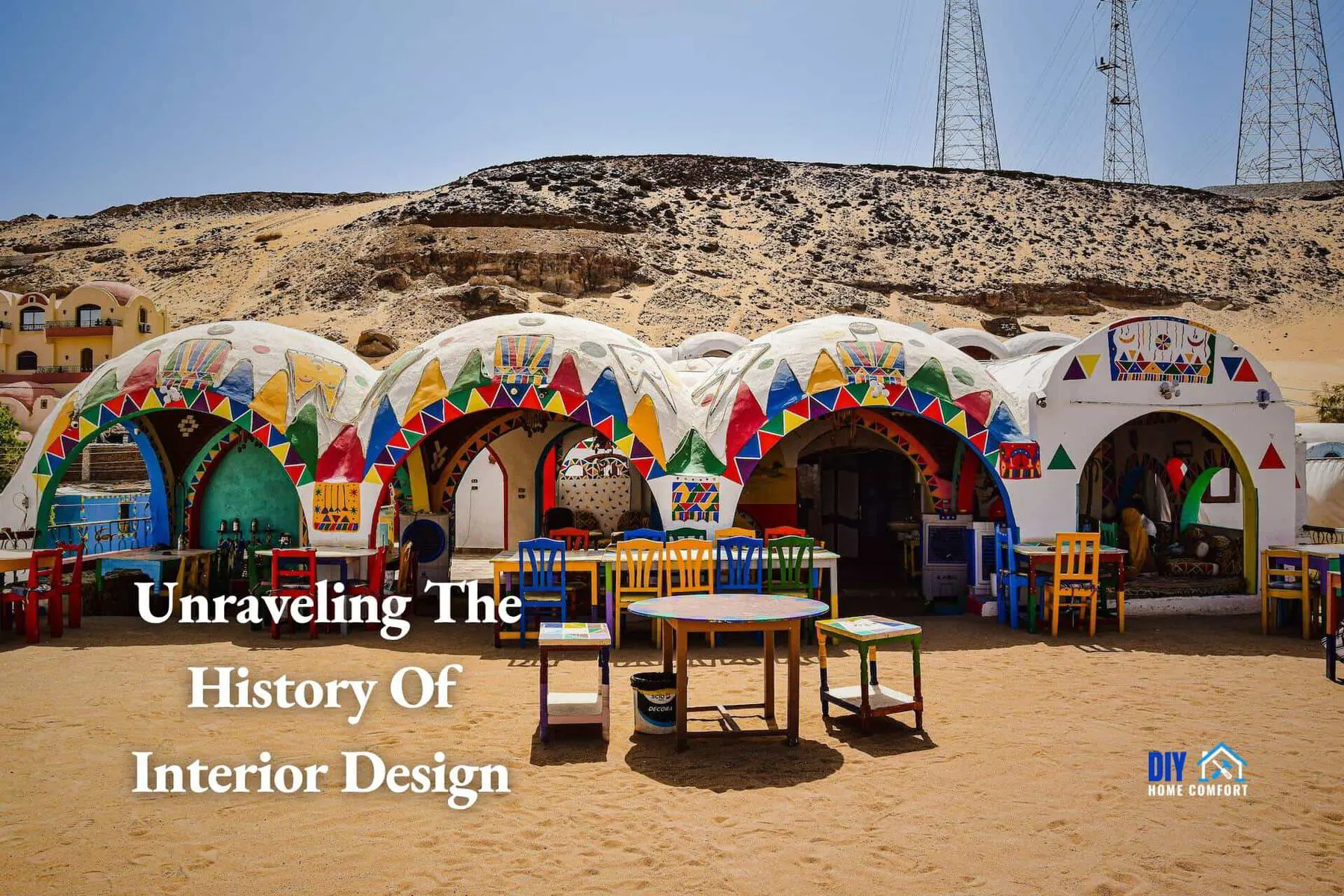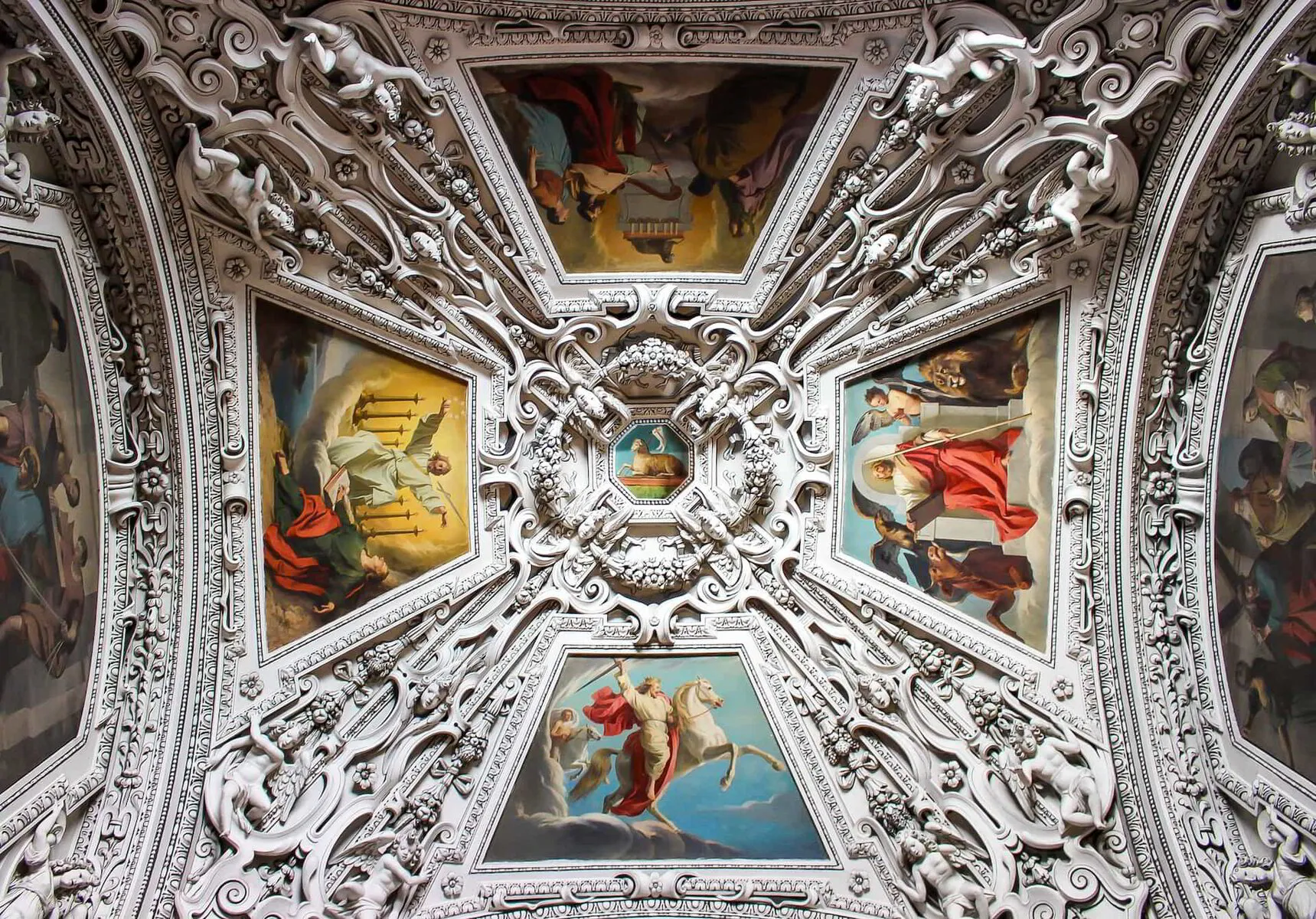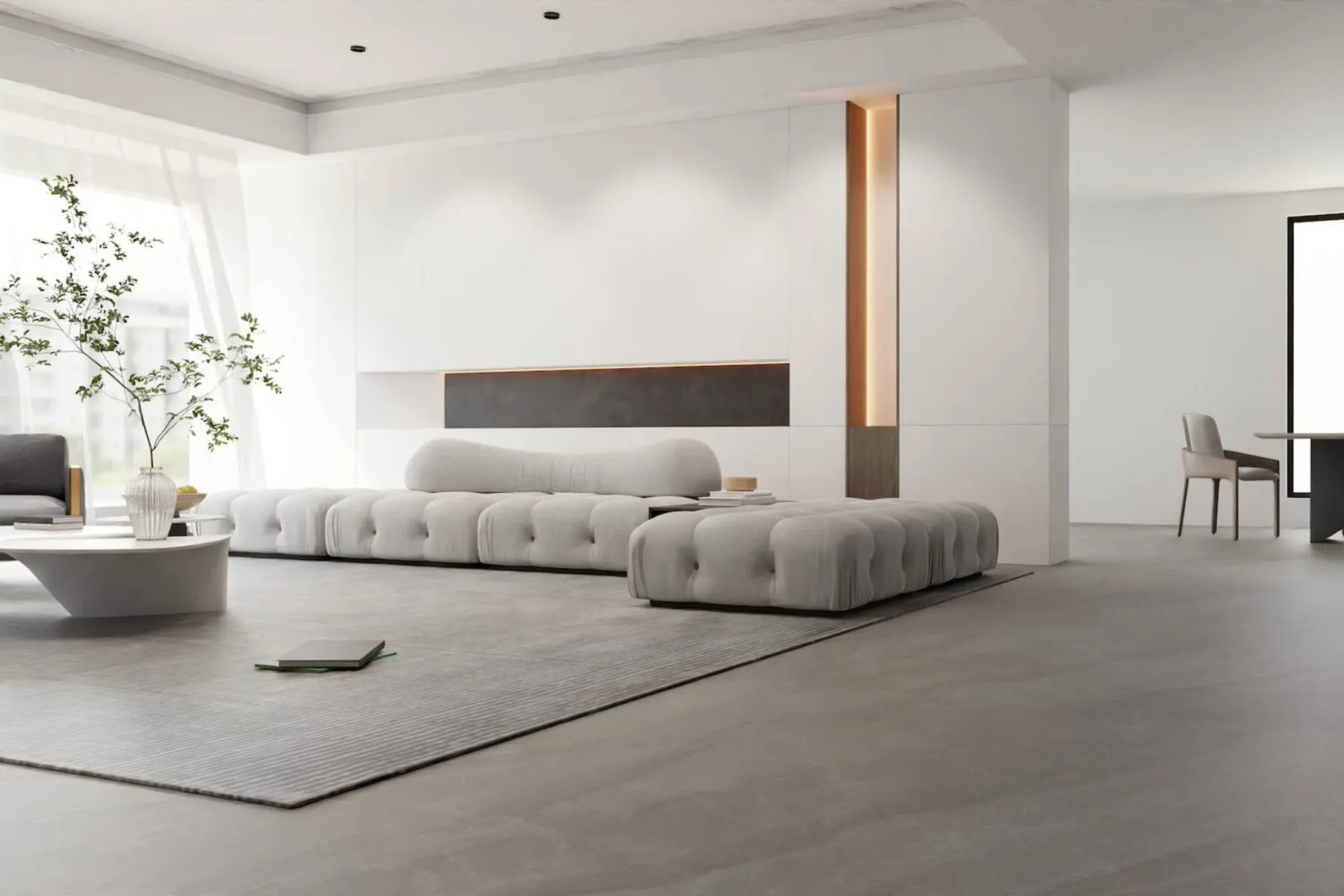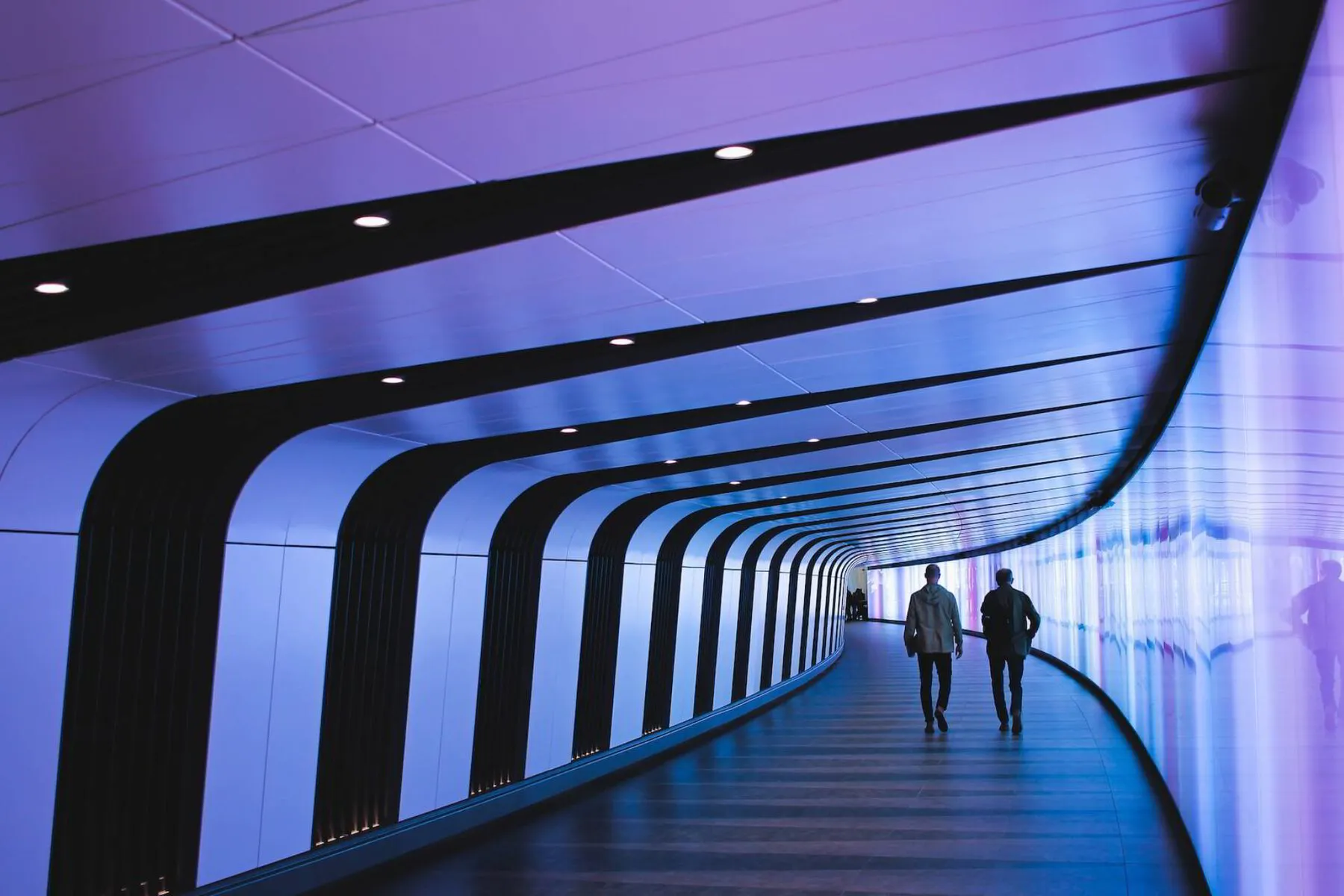Interior design has been a part of human civilizations for centuries - influencing the way we live and work, reflecting our values and societal ideals.
From wall paintings to the ornate palaces of ancient civilizations to the sleek modern spaces of the present day, the evolution of interior design has been shaped by a wide range of factors, from cultural, technological, and even political changes.
📘 Key Takeaways
- Ancient Roots: The history of interior design is deeply rooted in ancient civilizations like the Egyptians, Greeks, and Romans, setting the foundation for future design principles.
- Middle Ages to Renaissance Shift: Transitioning from the ornate Gothic style of the Middle Ages to the light-filled, human-centric designs of the Renaissance marked a significant shift in interior design approach.
- 18th and 19th Century Movements: The evolution of interior design continued with movements like neoclassicism, romanticism, and the Industrial Revolution, reflecting the cultural and technological changes of the times.
- 20th Century Styles: Modernism, the Bauhaus movement, Art Deco, and mid-century modern design dominated the 20th century, each bringing unique styles and influences to the interior design landscape.
- Future Trends: Looking forward, interior design is set to focus on wellness, mental health, and seamless technology integration, requiring designers to stay innovative and adaptable.
The Origins of Interior Design
The roots of interior design can be traced back to the earliest human settlements, where early humans crafted spaces for shelter, warmth, and basic survival needs.
However, it was the ancient civilizations that truly paved the way for the development of interior design.
Ancient Civilizations and Their Influence on Design
Ancient civilizations such as the Egyptian, Greek, and Roman empires placed a great deal of importance on the interior design elements of their homes and public spaces.
These civilizations often used elaborate materials such as precious metals, stones, and silks to adorn their interiors.
They also incorporated intricate designs and patterns, such as mosaics and frescoes, that continue to inspire designers to this day.
The Egyptians, for example, were known for their use of color and intricate patterns in their interior design.
They used bright colors such as red, blue, and green to decorate their walls and floors.
They also used hieroglyphics and intricate patterns to tell stories and convey messages in their designs.
The Greeks, on the other hand, were known for using symmetry and proportion in their interior design.
They believed the human body was the perfect form and used this as a basis for their designs.
They also used columns and pediments to create a sense of grandeur and scale in their buildings.
The Romans, meanwhile, were known for their use of marble and other luxurious materials in their interior design.
They also incorporated intricate mosaics and frescoes into their designs, often depicting scenes from mythology and everyday life.
The Middle Ages and the Emergence of Gothic Style
The Middle Ages saw the rise of the Gothic style, which was characterized by ornate details, high ceilings, and pointed arches.
Gothic architecture became the pinnacle of design during this period, with grand cathedrals being constructed throughout Europe.
The interiors of these buildings often featured stained glass windows, intricate woodwork, and intricate carvings.
During this time, interior design was heavily influenced by religion.
Churches and cathedrals were designed to inspire awe and reverence in their visitors, with grand altars, elaborate frescoes, and intricate stained glass windows.
The use of light and shadow was also an important aspect of Gothic design, with the interiors of these buildings often being dimly lit to create a sense of mystery and spirituality.
Overall, the history of interior design is a rich and fascinating one, with each era and civilization leaving its mark on the field of interior decorating.
From the Egyptians' colorful designs to the Middle Ages' grand cathedrals, interior design has always been an important aspect of human culture and creativity.
The Renaissance and the Birth of Modern Interior Design
The Renaissance period marked a significant shift in interior design, away from the dark and heavy style of the Middle Ages towards a new focus on light, color, and a celebration of the human form.
During the Renaissance, the world was changing rapidly.
New trade routes were opening up, and with them came new materials and ideas.
The printing press was invented, and books became more widely available.
This led to a renewed interest in interior design history and classical culture, and designers began to look to the past for inspiration.
Key Principles and Innovations of the Renaissance
The Renaissance saw a renewed appreciation for the classical principles of proportion, symmetry, and harmony.
Designers began to incorporate new innovations such as perspectival drawing, which gave a three-dimensional quality to spaces and depicted them realistically on a flat surface.
One of the key principles of Renaissance design was the idea of "decorum."
This meant that the design of a space should be appropriate to its function and the status of the person who would be using it.
For example, a palace would be designed differently than a church or a marketplace.
Another important innovation of the Renaissance was the use of color.
Designers began experimenting with new pigments and techniques, creating vibrant and richly colored interiors.
They also began to use light in new ways, using windows and mirrors to reflect and enhance natural light.
Iconic Designers and Their Contributions
The Renaissance also saw the rise of individual genius in design, with iconic designers such as Leonardo da Vinci, Michelangelo, and Raphael creating some of the most beautiful and innovative interiors of the period.
These European interior designers were able to use new materials, techniques, and tools to create spaces that were both functional and beautiful.
Leonardo da Vinci, for example, was not only a painter and sculptor but also an inventor and engineer.
He designed machines and devices that were ahead of their time, and his understanding of perspective and proportion made him a master of spatial design.
Michelangelo, on the other hand, was known for his sculptural work, but he also designed interiors for the Vatican.
His use of light and shadow created dramatic and emotional spaces that were awe-inspiring and functional.
Raphael, meanwhile, was known for his frescoes, which he used to decorate the interiors of palaces and churches.
His use of color and composition created harmonious and balanced spaces that were beautiful and uplifting.
The Renaissance was a time of great change and innovation in interior design.
Designers looked to the past for inspiration and embraced new materials, techniques, and ideas.
The result was a style that was both timeless and modern, and that continues to influence designers today.
The Evolution of Interior Design in the 18th and 19th Centuries
The 18th and 19th centuries were a time of great change and innovation in interior design.
As society evolved, so too did the styles and trends that influenced the way people decorated their homes.
From neoclassicism to romanticism and from the industrial revolution to the rise of modernism, many factors shaped the way interiors were designed and decorated.
Neoclassicism and the Influence of Ancient Greece and Rome
Neoclassicism was a design movement that emerged in the 18th century and was inspired by the art and architecture of ancient Greece and Rome.
The style emphasized symmetry, proportion, and a sense of order.
Interiors during this period often featured grand columns, ornate ceilings, and chandeliers.
Walls were adorned with classical motifs, such as urns, garlands, and medallions, while floors were covered with marble or parquet.
One of the most famous examples of neoclassical interior design is the Palace of Versailles in France.
The palace was built in the 17th century but underwent a major renovation in the 18th century under the direction of King Louis XVI.
The interior design of the palace was heavily influenced by neoclassicism, with grand halls and salons featuring marble floors, gilded moldings, and elaborate frescoes.
Romanticism and the Emphasis on Emotion and Individualism
Romanticism was a cultural movement that emerged in the late 18th century and emphasized the role of emotion and individualism in art and literature.
In interior design, this translated into a greater emphasis on personal expression and the beauty of imperfection.
Interiors during this period often featured richly textured fabrics, bold colors, and eclectic furniture arrangements.
One of the most famous examples of romantic interior design is the home of William Morris, a British textile designer, interior designer, and writer who was a key figure in the Arts and Crafts movement.
Morris's home, called Red House, was designed in collaboration with the architect Philip Webb and featured handcrafted furniture, intricate textiles, and a warm, inviting atmosphere.
The Industrial Revolution and Its Impact on Design
The Industrial Revolution brought about significant changes in interior design, with the mass production of furniture leading to a greater emphasis on function and simplicity.
Spaces were designed to be efficient, practical, and easy to clean, with new materials such as steel and glass being used to create sleek, modern interiors.
One of the most famous examples of industrial interior design is the Bauhaus school in Germany, which was founded in 1919 by the architect Walter Gropius.
The school's philosophy was based on the idea of creating a "total work of art" that would combine art, craft, and technology.
The interiors of the school's buildings were designed to be functional and minimalistic, with clean lines and simple forms.
The evolution of interior design in the 18th and 19th centuries reflected the changing cultural, social, and technological landscape of the time.
From the grandeur of neoclassicism to the personal expression of romanticism and from the efficiency of the industrial revolution to the sleek minimalism of modernism, each style was a response to the needs and desires of the people who lived during those times.
📘 Related Reading: Modern Industrial Interior Design: 15 Design Ideas For That Old New Look!
The 20th Century and the Rise of Modernism
The 20th century brought about a significant shift in how we think about design, with modernism emerging as a dominant and influential force.
This period was marked by a departure from traditional design styles and a focus on innovation, experimentation, and the use of new materials and technologies.
The rise of modernism was driven by a number of factors, including the rapid pace of technological development, the growing influence of industrialization, and the changing social and cultural landscape of the time.
Designers during this period sought to create spaces that reflected these changes and embodied the spirit of the age.
The Bauhaus Movement and the Integration of Art and Technology
The Bauhaus movement, which emerged in Germany in the early 20th century, was one of the most influential and innovative design movements of the time.
The movement emphasized the integration of art and technology, with designers striving to create spaces that were both functional and beautiful.
Interiors during this period often featured abstract shapes, bold colors, and clean lines.
Furniture and accessories were designed to be simple, functional, and streamlined, emphasizing the use of new materials such as steel, glass, and concrete.
The Bauhaus movement had a profound influence on modern design, and its legacy can still be seen in many of the buildings and interiors we see today.
📘 Related Reading: Bauhaus Design 101: The Ultimate Guide to Transforming Your Home
Art Deco and the Celebration of Luxury and Glamour
The Art Deco movement, which emerged in the 1920s and 1930s, took a more decadent approach to interior design styles, celebrating luxury, glamour, and excess.
Interiors during this period often featured bold geometric patterns, lavish materials such as marble and gold, and symmetrical designs.
Art Deco was a response to the austerity and hardship of the First World War, and it reflected a desire for a more opulent and extravagant lifestyle.
The movement significantly impacted the design of everything from architecture and interior design to fashion and jewelry.
📘 Related Reading: Reviving the Glamour: A Comprehensive Guide to Modern Art Deco Interior Design
Mid-Century Modern and the Emphasis on Function and Simplicity
The mid-century modern design emerged in the post-war period, emphasizing function and simplicity.
Designers favored clean lines, natural materials, and a minimalist aesthetic.
Interiors during this period often featured open floor plans, large windows, and a focus on using natural light.
Furniture and accessories were designed to be functional and practical, with an emphasis on comfort and ease of use.
Mid-century modern design is still popular today, and its influence can be seen in everything from furniture and lighting to architecture and interior design.
📘 Related Reading: Revamping Your Home with Mid-Century Modern Decor
Contemporary Interior Design Trends and Influences
Today, interior design continues to evolve, taking inspiration from various different trends and influences.
With the advancement of technology and the growing importance of environmental sustainability, interior design has become more complex yet more exciting than ever before.
Minimalism and the Pursuit of Clarity and Calm
Minimalism continues to be a popular trend in interior design, with clean lines, understated colors, and a focus on simplicity and functionality.
Interiors during this period often use natural materials such as wood and stone, and aim to create a sense of calm and tranquility.
One of the key elements of minimalism is the use of space.
Minimalist interiors are designed to be open and uncluttered, with plenty of room for movement and relaxation.
The use of natural light is also important, with large windows and skylights being a common feature in minimalist homes.
Another aspect of minimalism is the use of neutral colors.
Beige, white, and light grey are popular choices for walls and furniture, as they create a sense of calm and serenity.
Textures are also important in minimalist design, with natural materials such as linen, wool, and cotton being used to add depth and interest to the space.
Sustainable Design and the Focus on Environmental Responsibility
Sustainable design has become an increasingly important trend in recent years, with a focus on using environmentally-friendly materials such as bamboo, recycled glass, and reclaimed wood.
Designers are now incorporating sustainable elements into their designs, such as energy-efficient lighting, eco-friendly furniture, and green spaces.
One of the key benefits of sustainable design is that it can help to reduce the environmental impact of buildings.
By using renewable materials and reducing energy consumption, sustainable design can help to create a more sustainable future for our planet.
Another important aspect of sustainable design is the use of natural light.
Many sustainable buildings are designed to maximize the use of natural light, with large windows and skylights being used to reduce the need for artificial lighting.
This not only helps to reduce energy consumption but also creates a more pleasant and welcoming environment for occupants.
The Role of Technology in Shaping Modern Interiors
The use of technology in interior design has also had a significant impact on the way we approach design.
Today, designers can use 3D modeling and virtual reality software to create photorealistic representations of their designs, allowing clients to see their spaces before the construction process begins.
Additionally, smart homes and the Internet of Things (IoT) are transforming how we interact with our homes, as we can now control everything from the temperature to the lighting with just a touch of a button.
One of the most exciting developments in interior design technology is the use of augmented reality.
With augmented reality, designers can create virtual overlays of their designs on top of real-world spaces, allowing clients to see how their designs will look in their actual homes.
This technology has the potential to revolutionize the way we approach interior design, making it easier and more accessible than ever before.
📘 Related Reading: Exploring the Latest Trends in Interior Design Technology
Emerging Trends and Predictions for the Industry
Some emerging trends in interior design include a focus on wellness and mental health, as well as a greater emphasis on interior design services bringing the outdoors inside.
Additionally, as technology advances, we can expect to see more seamless integration of technology into our homes.
The Importance of Adaptability and Innovation in Design
One thing is certain - in order to stay relevant in the world of interior design, it's essential to remain adaptable and innovative.
By staying on top of emerging trends and technological advancements, interior designers can continue to create spaces that are beautiful, functional, and reflective of the world around us.
Final Thoughts on the History of Interior Design
To wrap it up, the history of interior design is full of unique and fascinating stories.
From vibrant palettes and ambitious visionaries to striking constructions and luxurious materials, there is no question that design inspiration moves us forward each day.
Seeing how cultures have influenced each other over time has helped to create some of today’s most beautiful spaces.
It is truly amazing to see what designers have been doing throughout history, and now with so many different influences incorporated into modern-day designs, the possibilities are endless.
If you want to explore interior design more, check out the rest of our blog for a more detailed look!
Lara Harding
Lara is a supporting author @ DIY Home Comfort. She's an experienced interior designer and decorator and a full-time mom. You can find out more about her here.








